Contents > Elementary School Life > 1.School Life and Regulations › A Day at School
A Day at School
On your way to school
- Go to school in groups according to your school district. Some schools will have groups comprising of two or more children willing to travel to school together.
- Wear your name tag on the left side of your chest when you go to school.
*Some schools have the students put their nametags on after arriving at the school. - Put your school materials and supplies in your "Randoseru" (school backpack) when you go to
school.
* There are situations where the class materials are carried in a handbag or knapsack.
*Some schools require a crime prevention buzzer to be attached to the student's "Randoseru". - Be punctual arriving at school; do not be late.
- Greet your neighbors, friends, crossing guards and teachers with a loud and cheerful "Ohayo gozaimasu" (Good morning) when you see them on your way to school.
- Look both ways before you cross the street (do not rush in front of cars). Respect the rules of the road, watch out for accidents and conduct yourself in a proper manner while en route to school.
- Change into your school shoes before entering the school.
- While on your way to school, do not return home even if you notice you have forgotten something.
Absence
- If you are going to be absent or late for school due to sickness or any other reason, telephone the school. There are also schools that use a contact notebook in which you should write the information that you want to tell the teacher and have a friend living close to you give it to your homeroom teacher.
(If you will be absent, write a note with the date and the reason for your absence. If you will be late for school, write a note with the date, the time you will attend school, and the reason for being late.)
※ If you cannot have a note passed on, please call the school by 8:30. - Make sure to inform your school of any lengthy absences from school (leaving the country, hospitalization, etc).
Study
- Concentrate on learning the basics essential for life while making sure not to ignore your personal interests and desires. Learn what is taught, but also build foundations for individual thinking.
- Develop a strong understanding of human nature, society, and self-awareness as a citizen living in our international society.
The curriculum is as follows(Different subjects between grades is emphasized later.)
- 1st Grade・2nd Grade
- Japanese, Arithmetic, Lifestyle, Music, Arts, Physical Education, Ethics, Class Activities.
- 3rd Grade・4th Grade
- Japanese, Social Studies, Arithmetic, Science, Music, Arts, Physical Education, Ethics, Class activities, Club activities (from 4th grade), Integrated Studies.
- 5th Grade・6th Grade
- Japanese, Social Studies, Arithmetic, Science, Music, Arts, Home Economics, Physical Education, Ethics, Class activities, Club activities , Integrated Studies, Foreign Language Activities
※ In elementary school, one class is 45 minutes in length.
- ○ Lifestyle Class
- Students learn through concrete activities and experiences to take an interest in themselves, others around them and in their society and environment. Students discover their own qualities and those of their peers while learning to coexist amidst differences. This class teaches behaviors and abilities essential for life within a society and develops the fundamentals necessary to become an independent individual.
- ○ Integrated Studies
- Children collaborate to share knowledge (both intrinsic and learned) and abilities (both internal and external to the curriculum of the ethics and special activities classes) vital to their daily lives. These classes are aimed at nurturing the "Importance of Exploration" by having the students seek out their own assignments, assessing and solving problems, and learning through the process of trial and error. The objective is to learn how to study, develop critical thinking skills, and to organize personal interests into a working way of life.
- ○ Club activities
- 4th, 5th and 6th graders enjoy activities in which they have an interest during class hours. The goal of these activities is to nurture one's individuality, strengthen one's social nature, and to produce good character.
Uniforms
- Wear the uniform in a way that does not restrict mobility.
- Wear the name plate on the left side.
1st and 2nd year’s nameplates are in hiragana. From the 3rd year, they are in kanji.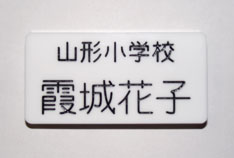
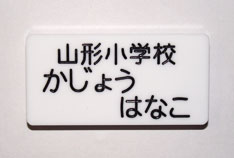
- Keep your jacket with you in case of changes in temperature.
- Wear appropriate attire when engaging in physical activities.
- Winter ・・・・・・・・ Long sleeves, long pants.
- Summer (June to October) ・・・・・・・ Short sleeves, short pants or shorts.
- Wear shoes with thin soles.
- Indoor shoes ・・・・・・・ White shoes
(Shoes with no laces are easier to wear for 1st and 2nd graders.) - Outdoor shoes ・・・・・・・ Sports shoes (suitable for all outdoor activities).
- Indoor shoes ・・・・・・・ White shoes
Name on belongings
- Please write your name, grade, and class on all your belongings.
In some schools, it is required to write your entrance year instead of your grade and class.
For example, H24入 (Heisei 24th year entered)
Write your name on the heels of the back of your shoes so that they can be easily distinguished on the shoe rack.
School lunch
Students on duty must take part in the preparation and clean up of school lunch.
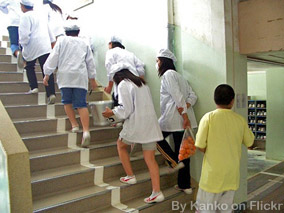
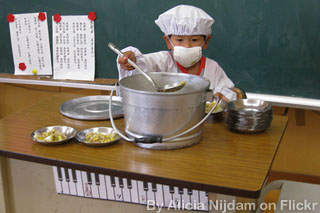
- <Preparation>
-
- Put chopsticks into a chopstick box and bring it to school every day. Take these home each day and wash them.
- Wear your school lunch uniform, hat, and mask.
- Take your school lunch uniform bag(Containing uniform jacket, hat, and mask) back home on Fridays to be laundered. Bring it back to school clean on Mondays. Depending on the school, lunch uniforms will either have to be purchased at personal expense or will be provided by the school.
- Students on duty must cut their fingernails and wash their hands.
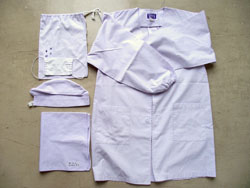
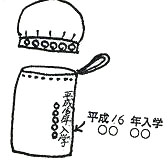

Masks must be bought personally.
Write your name on it. - <Type of School Lunches>
-
- School lunch is provided from Monday to Friday. However, occasionally, certain school activities will require students to bring their own lunch. Staple foods are rice, bread or noodles.
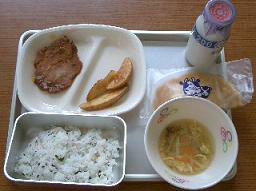
An example of school lunch with rice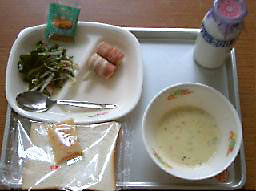
An example of school lunch with breadThere are days when school lunch is not served due to special events and students must bring a lunchbox ("bento") to school. Please check the school lunch schedule or the grade-level schedule for the days when a "bento" is required. The bento should be homemade.
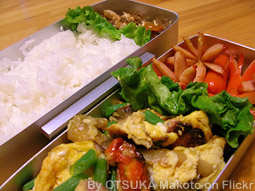
An example of a homemade "bento", or lunchbox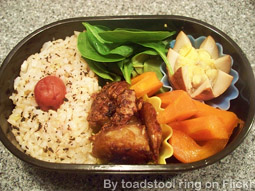
An example of a homemade "bento", or lunchbox
Cleaning time
All students must work together to keep the school clean.
- Uniform
- Follow the rules regarding uniforms decided by the school.
For example: Wear the red & white hat, change your skirt, etc...
- Follow the rules regarding uniforms decided by the school.
- Others
- Everyone should work together to clean the school within the specified cleaning time.
- Schools generally have cleaning time after school lunch or after the noon recess.
- Employ caution when using cleaning items and return them to their designated places when finished.
- Cleaning groups vary according to schools, some schools will organize them by classes or grades.
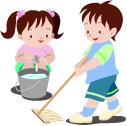
How to address people
The standard procedure within most schools is to use honorific terms like "san" after one's name when addressing a student or "sensei" in the case of a teacher.
Some schools instruct the students to use "san", "kun",or "chan" after other students' names.
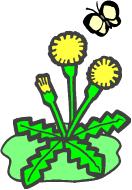
Using the bathroom
- When using a Japanese-style toilet, positioning your feet close to the toilet will reduce the chance of a mishap.
If you miss, wipe clean with toilet paper.
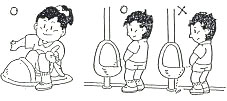
Japanese-style Toilet
Japanese-style Toilet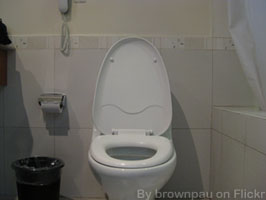
Western-style Toilet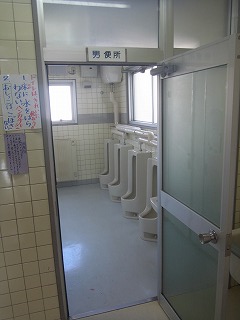
Japanese-style Toilet for Boys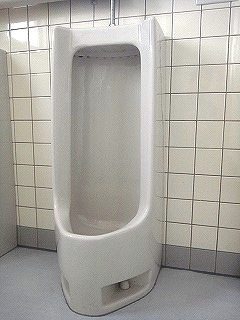
Japanese-style Toilet for Boys - When finished, make sure to flush the toilet.
- You need only pull the lever to flush the toilet.(Please pull the lever with your hands)
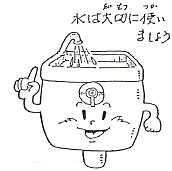
- Do not waste toilet paper.
- Make sure to flush the used toilet paper.
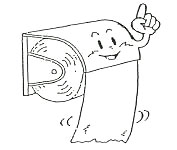
- When finished, inspect the toilet before leaving the bathroom.
Leave the toilet as clean as it was when you came.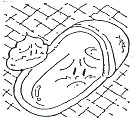
- Wash your hands at the faucets and wipe your hands on your own handkerchief.